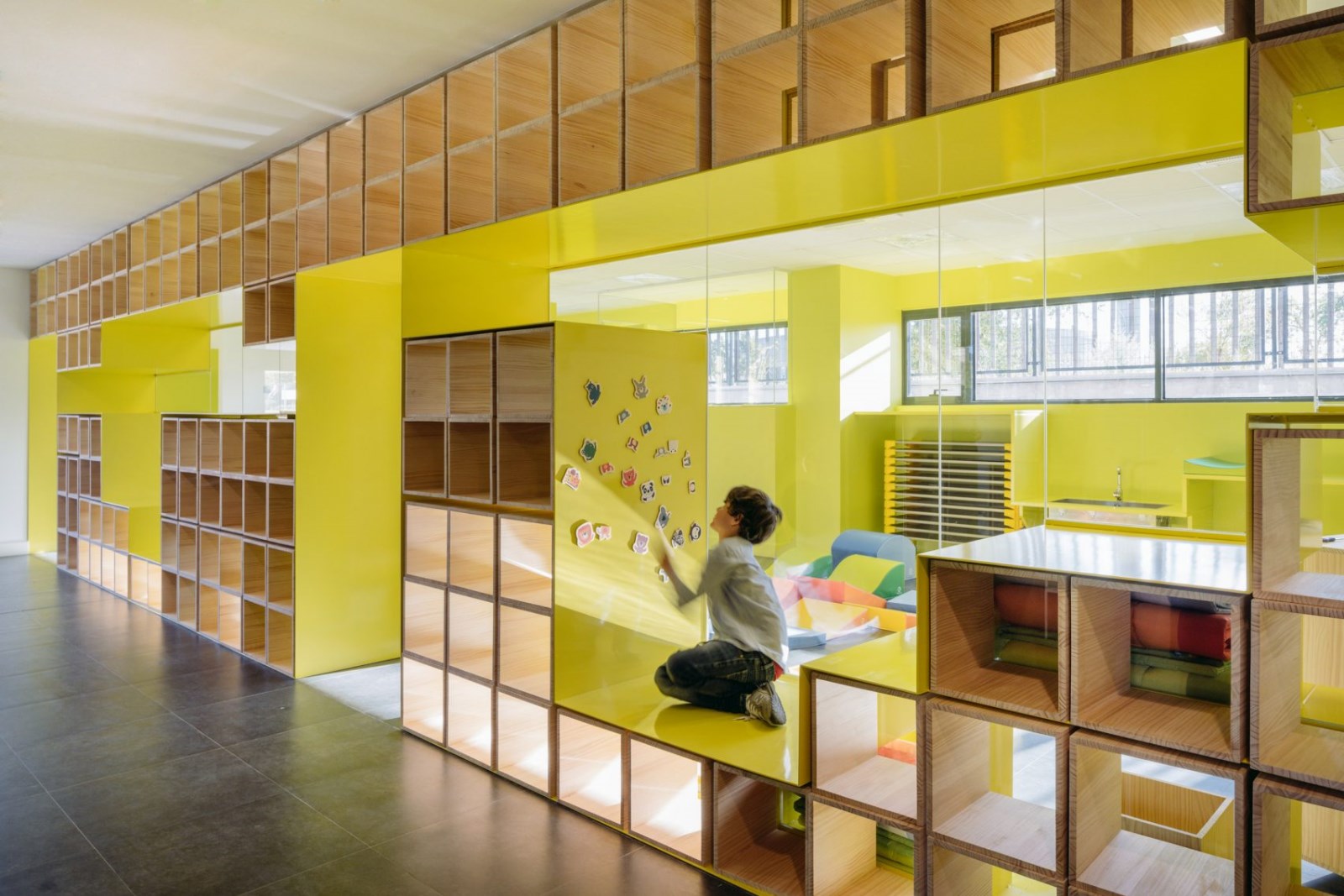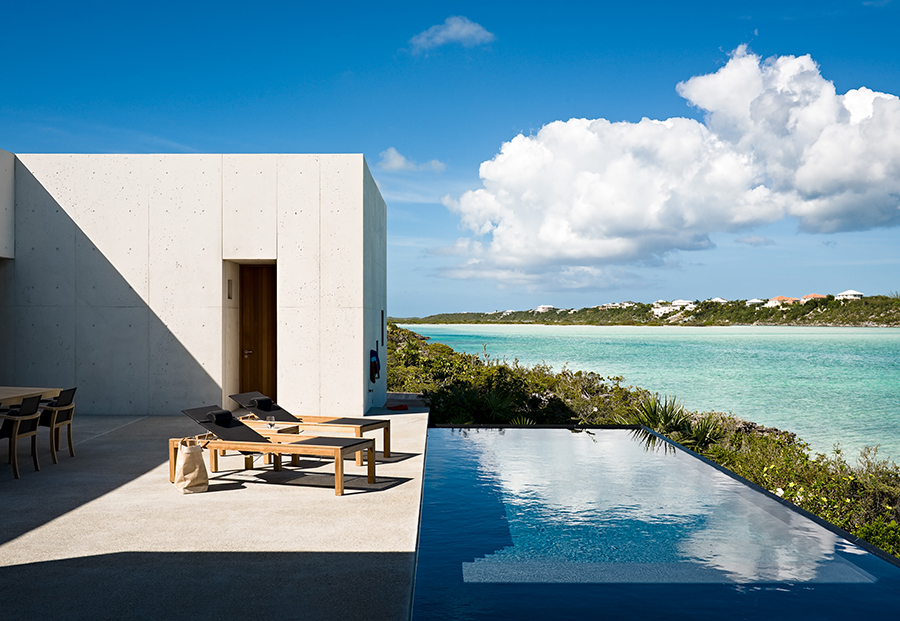Karlovac Freshwater Aquarium and River Museum 3LHD
2016-11-21 12:00
© Miljenko Bernfest
(c)MiljenkoBernfest


架构师提供的文本描述。喀洛瓦茨淡水水族馆位于科拉纳河畔。建筑体积部分挖入地面,从外部边缘覆盖着土堤和绿色植物。这个设计理念的灵感来源于这个城市的历史中心-“喀洛瓦茨之星”,四周环绕着“ŠAanci”-防御性的土墙和土堆。目标是形成一个新的城市中心,并验证河边的长廊。形成了三条步行路线:向市中心和河流;向南,向体育和娱乐中心;向东,向道路通道。在步行路线的交界处有一个新的点-一个广场,周围有所有水族馆设施:入口空间、纪念品商店、咖啡厅、图书馆和办公室。
Text description provided by the architects. The Karlovac freshwater aquarium is located by the river Korana. The building volume is partially dug into the ground and covered with earthen embankments and greenery from its outer edges. The design concept was inspired by the city’s historic center “Karlovac star” surrounded by “Šanci” – defensive earthen walls and mounds. The goal was to form a new city focal point and to validate the promenade by the river. Three walking routes were formed: towards the city center and the river; towards the south and the sports and recreational center; and towards east and the road access. A new point is located at the junction of the walking routes - a square around which all of the aquarium facilities are located: entrance spaces, souvenir shop, cafe bar, library and offices.
© Jure Živković
(c)法律上的"IVKVikh"


Ground Floor


© Jure Živković
(c)法律上的"IVKVikh"


水族馆展览展示了克罗地亚河流及其生态系统的动植物。展示布局遵循喀斯特河的流动-连同它的植物,动物群和生物多样性。展览从外面开始,广场上有一个水面。它继续在建筑物内与一个系统的坡道,风像河流下降到地下室的水平,因为特定的植物和动物物种需要完全控制照明条件,以求生存。水族馆被放置在参观小径的上方和下面。沿着行人坡道,人们首先从上面观察到鱼,就像它们沿着河流行走时一样;然后从两边-它们可以在水面下面看到它们。经过源头(河流上游)的声音安静下来,游客跳入洞穴,其中特有的物种,往往是在地下溪流中发现。空间扩大了,灯光来自坦克,游客可以在中心地区休息一下,听洞穴里记录的声音,观察展出的特有物种。洞穴之后,游客们来到了一个水族馆,里面有更大的稀有物种标本,这些物种已经从克罗地亚的自然栖息地消失了。游客可以观察生活在河床较温暖地区的鱼类和水生植物。水族馆是从侧面,然后从下面看到,当游客走进一个隧道,唤起沉浸在河。隧道之后,游客们会经过一系列水族馆,里面通常会有睡莲和水草,这些水族馆的下游通常是在一条河流的沼泽栖息地。展览以一套层叠的水族馆系统结束,水族馆的生物群落展示了瀑布和钙华屏障。
The aquarium exhibition displays the flora and fauna of Croatian rivers and their ecosystems. The display layout follows the flow of a karst river – together with its flora, fauna and biodiversity. The exhibition starts outside, with a water surface on the square. It continues inside the building with a system of ramps that wind like a river down into the basement level because specific plant and animal species require complete control of lighting conditions in order to survive. Aquariums are placed along, above and below the visitor paths. Along the pedestrian ramps the fish are first observed from above, as they are when walking along the river; and then from the sides - they can be seen below the water surface. After the headwaters (upper part of a river) the sounds quiet down, visitors plunge into caves that feature endemic species which are often found in subterranean streams. The space expands, lighting comes from the tanks, and visitors can take a break in the central area, listen to the sounds recorded in caves, and observe the exhibited endemic species. After the cave, the visitors arrive to an aquarium with larger specimens of rare species that have disappeared from their natural habitats in Croatia. The visitors can observe the fish and aquatic plants that live in warmer parts of the riverbed. The aquariums are seen from the side, and then from underneath as the visitors walk into a tunnel that evokes immersion into a river. After the tunnel, visitors pass through a series of aquariums with water lilies and rushes usually present downstream, in the marshy habitats of a river. The exhibition ends with a system of cascading aquariums whose biotopes display waterfalls and a travertine barrier.
© Jure Živković
(c)法律上的"IVKVikh"


© Jure Živković
(c)法律上的"IVKVikh"


最后,一个楼梯和一部电梯通过礼品店把游客送回大厅门口。水的工艺参数分析空间、科研中心和鱼化空间都位于布局的中心。
Finally, a stairway and an elevator return the visitors to the entrance hall through the gift shop. A space for analysis of the technological parameters of water, a scientific research center and fish aclamatization spaces are located in the center of the layout.
© Jure Živković
(c)法律上的"IVKVikh"


© Jure Živković
(c)法律上的"IVKVikh"


卡尔洛瓦茨淡水水族馆由欧洲区域发展基金根据“区域竞争力”2007-20013年业务方案共同供资。该项目的总价值为36.691.939,28 Kuna,其中欧洲区域发展基金的赠款为36,222,282.45 Kuna。
Karlovac freshwater aquarium is co-financed from the European Regional Development Fund under the “Regional Competitiveness” 2007-20013 Operational Programme. The total value of the project is 36.691.939,28 Kuna’s, of which the grant from the European Regional Development Fund is 36,222,282.45 Kuna’s.
© Jure Živković
(c)法律上的"IVKVikh"


产品描述。
Product Description.
着色混凝土
Pigmented concrete
在外墙上使用的混凝土是着色的,在施工现场用一种特殊的现场方法生产。为了达到预期效果,选择了一种特殊的颗粒类型和大小-使外观颜色类似于地面/土壤的颜色。首先,混凝土要小心地涂在船体上,分层振动,培育一段时间。在将其安装在外墙之前,船体要涂上一种水泥乳阻燃剂,以减缓混凝土中的粘结过程。在拆下船体后,清洗混凝土表面以获得特定的纹理。矿物颗粒变得可见,并清楚地定义了完整的和坚实的混凝土表面的结构和结构。
The concrete used on the façade is pigmented and produced by a special in-situ method right on the construction site. A special type and size of grain was selected to achieve the desired effect – to make the façade color resemble the color of ground/soil. First, the concrete is carefully applied on the hull, vibrated in layers and cultivated for a period of time. Before it is mounted on the façade the hull is coated with a cement milk retardant to slow down the binding process in the concrete. After the hull is removed the concrete surface is washed to obtain a specific texture. The mineral grains become visible and clearly define the structure and texture of the complete and solid concrete surface.
© Jure Živković
(c)法律上的"IVKVikh"




























































Architects 3LHD
Location Ul. Gornje Mekušje, 47000, Karlovac, Croatia
Category Aquarium
Architect in Charge Saša Begović, Marko Dabrović, Tatjana Grozdanić Begović, Silvije Novak, Irena Mažer Hranuelli, Vibor Granić, Deša Ucović, Ivana Šajn, Nevena Kuzmanić, Romana Ilić
Area 2915.0 m2
Project Year 2016
Photographs Miljenko Bernfest , Jure Živković
Manufacturers Loading...
















_james_jones.jpg)














